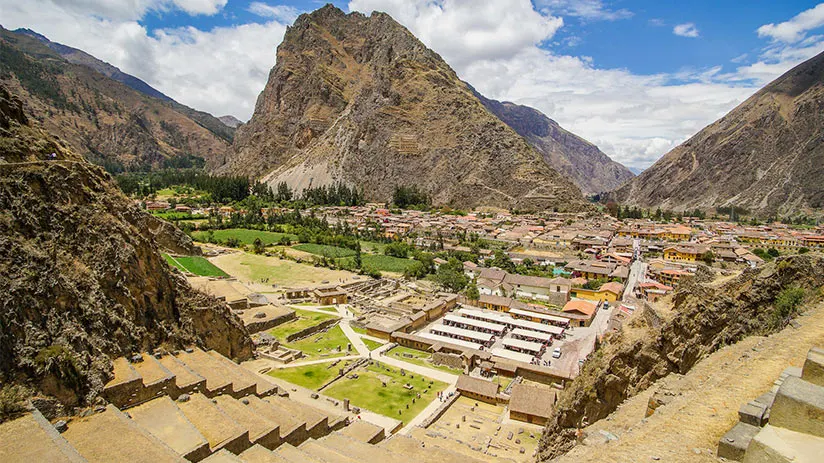Ollantaytambo is not only a preview stop for those who want to visit Machu Picchu by train. But nowadays, it’s also a living Inca village! Upon losing Cusco, the Incas gradually ran away from the Spanish invaders until they entered the jungle. Ollantaytambo was the last Inca bastion during this escape.
Today, local people still inhabit the town by keeping the original Inca structure of houses and plazas. Moreover, the Inca fortress that shelters the village is impressive and remains almost intact. So, if you are planning a trip to Peru, this place should be a must-see in your itinerary. Machu Travel Peru brings you a complete guide to this fantastic place!
Everything you need to know about this fantastic Inca archaeological park
Ollantaytambo
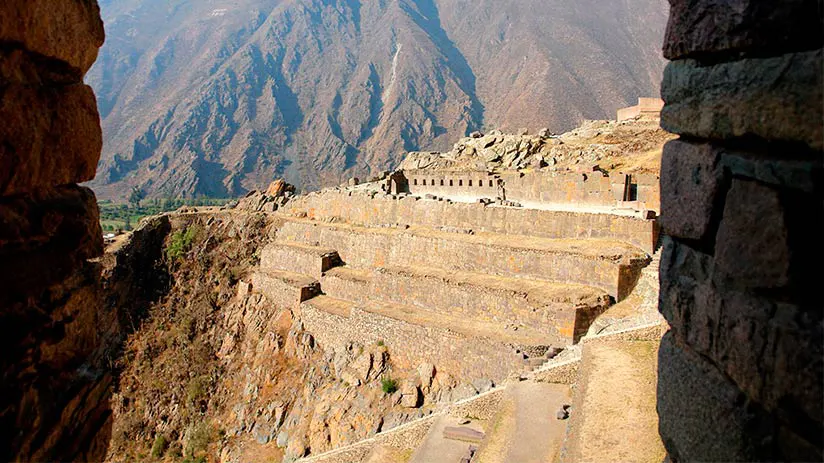
It is 60 km northwest of Cusco, at the western end of the Sacred Valley, at 2792 m.a.s.l. According to a Sacred Valley travel guide, the Incas valued its fertile soils and perfect climate all year round. For this reason, they named it “Sacred” and built temples, palaces, and fortresses there.
Ollantaytambo was a very important agricultural, military, and religious center. The Incas built it over ancient remains on the top of a namesake mountain with huge and beautiful well-carved rocks.
Even more, the village on the mountain slope hosted the Inca plebs of those times. Nowadays, its inhabitants preserve their original Inca layout and architecture. Therefore, Ollantaytambo is one of the best tourist sites in Peru. In addition, there is a train station, the last stop before to get to Machu Picchu town.
A. Name origin
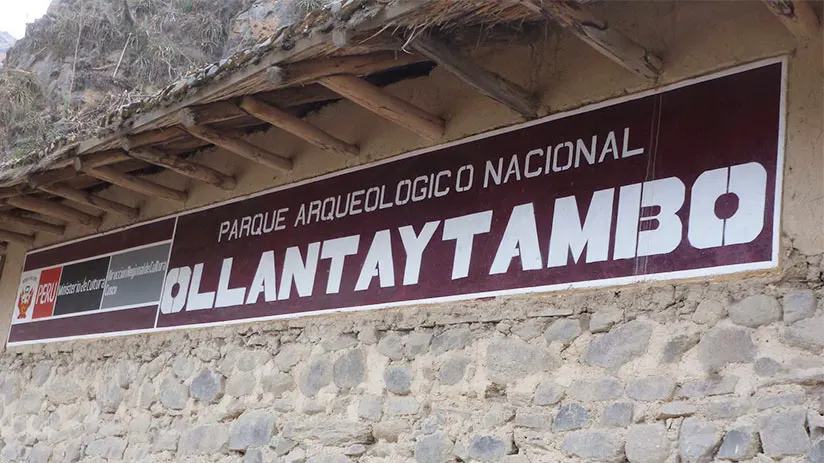
Ollantaytambo (O-yan-tay-tombo) comes from the Aymara language “Ullanwtawi” which means “Viewpoint” or “Place to Look Down”. The Aymaras lived in southern Peru from 1100 A.C. to 1480 A.C. before the Incas arrived.
In the Inca’s time, the Quechua language changed the name to “Ullantay”. Years later, the Incas added the term Tampu, “City that offers food and accommodation”.
Moreover, Victor Angles, a recognized Cusquenean historian, assures that the name comes from a famous Inca general, “Ollantay”.
History
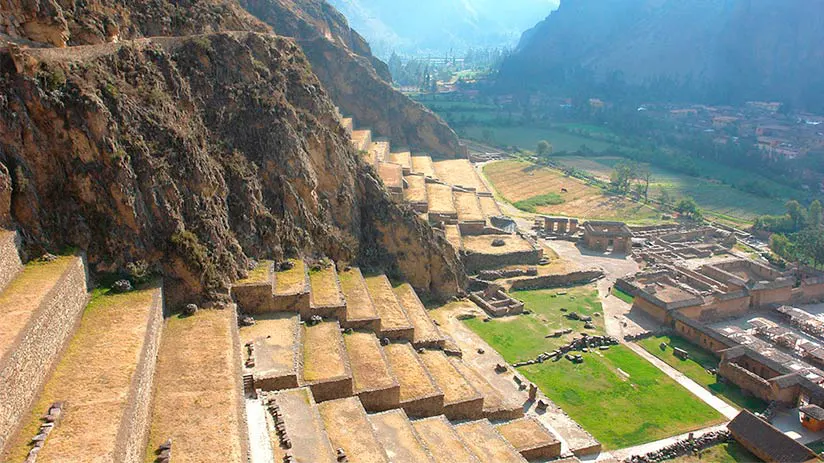
In pre-Columbian times, the Aymaras occupied and refurbished a little citadel in the current Ollantaytambo mountain. Later, they build a series of checkpoints to protect the citadel facing the Inca expansion.
However, in the middle of the XV Century, Pachacutec Inca reached the conquest of the Aymaras and Ollantaytambo. He was the one who ordered the strengthening of the fortress with new buildings and watchtowers, which we know today. At his death, the town passed to the domain of its family.
Finally, after losing Cusco in 1537, the Spanish conquerors under Hernando Pizarro pushed Manco Inca to the deep jungle. During this escape, the Inca defeated used Ollantaytambo as the last refuge in the Andes. They managed to defeat the Spanish in battle. However, they knew that the Europeans would arrive with reinforcements from Cusco.
So, the Incas abandoned Ollantaytambo and entered the jungle forever. For this escape, they used the famous Inca Trail.
f her parents. The moved Inca spared Ollantay’s life and freed his sister, allowing the union of the family.
What to visit
1. The Sun Real House
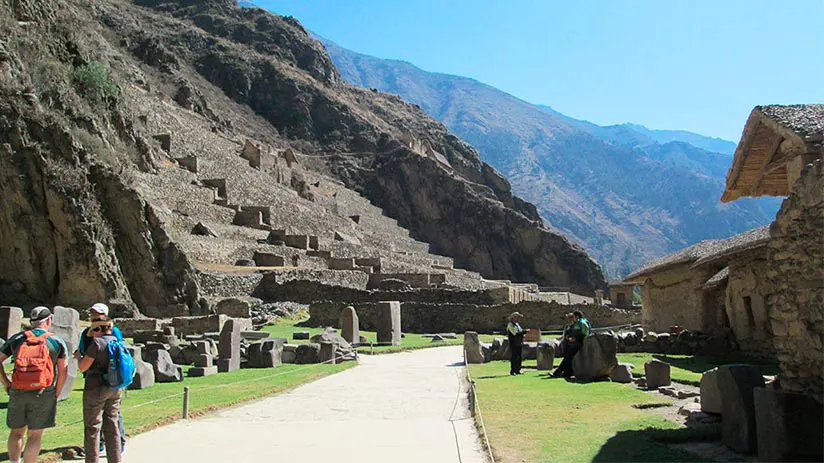
17 large Andean terraces that overlook the esplanade, belowing to the base of the hill. The Andean terraces served two purposes: supporting the Inca fortress and providing areas for growing Andean grains. In this form, Incas take advantage of the rough but nutrient-rich soil.
2. The Solid Chocana
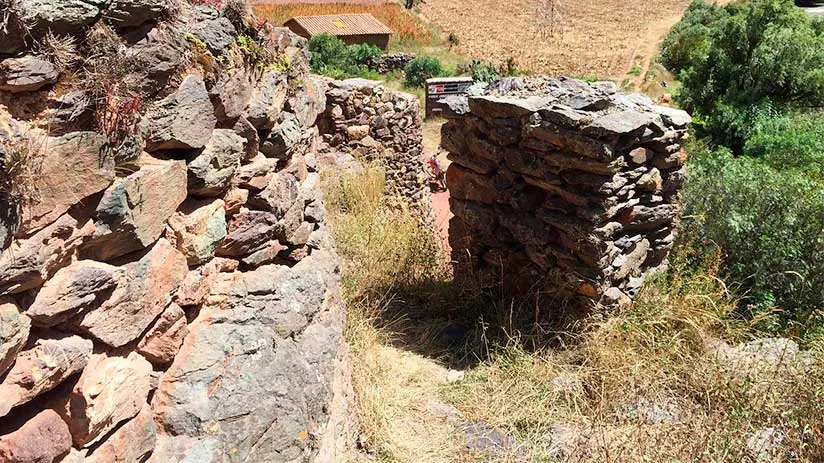
This was an administrative center, checkpoint, and little fortress located 2 kilometers from Ollantaytambo. Its name means “where you knock down or throw”. Its construction possibly dates back to pre-Inca times, from the Aymara era.
3. The Kuychipunku
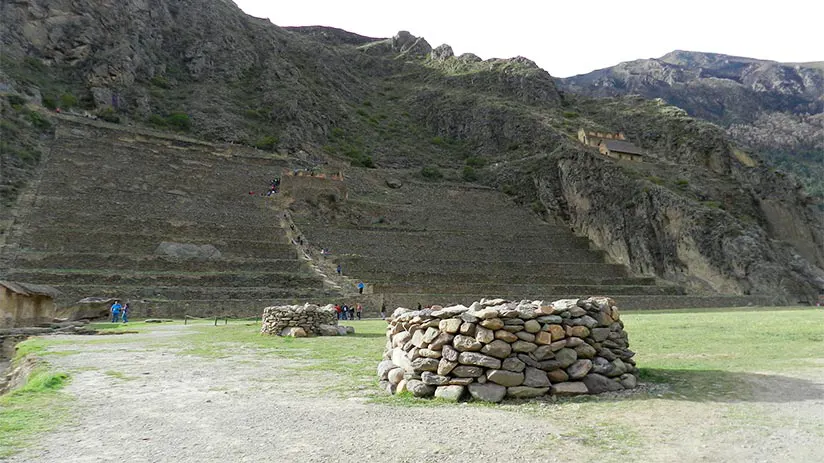
Plaza Mañay Rakay (Square of Petitions) is its other name. It is a little esplanade over the right bank of the Patacancha River. It is just parallel to the entrance of the archaeological site. Its walls conserve small openings that scholars believe to have been doors or entrances to the enclosure.
4. The Sun Temple
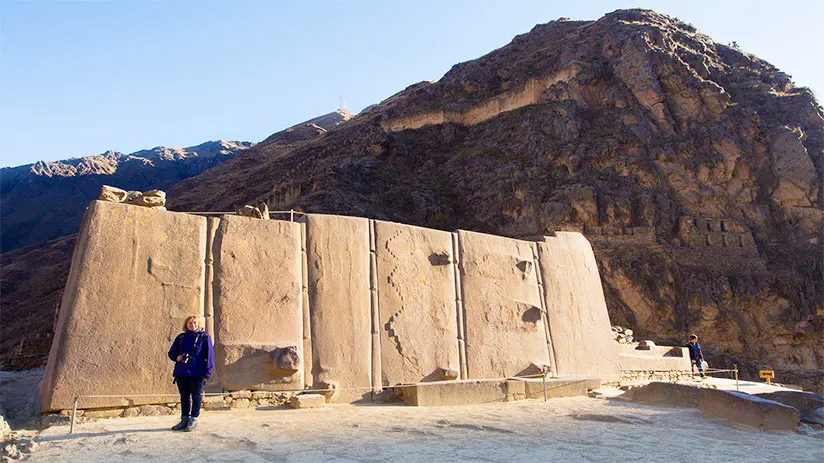
Once reach the top, after having climbed the 200 steps, you will be able to appreciate the Temple of the Sun. Six colossal stone blocks of rectangular shape made up this temple. These appear as if they had been an unfinished construction. The largest monolith is over two meters wide and about four meters high.
The Incas carved the Chacana on its surface. The Chacana was an Andean cross whose sides formed gradients of 3 angles. Each angle represented the three worlds of Andean cosmology. Uku Pacha (The dead world), Kay Pacha (The living world), and the Hanan Pacha (The gods world).
5. Main gate and the temple of 10 niches
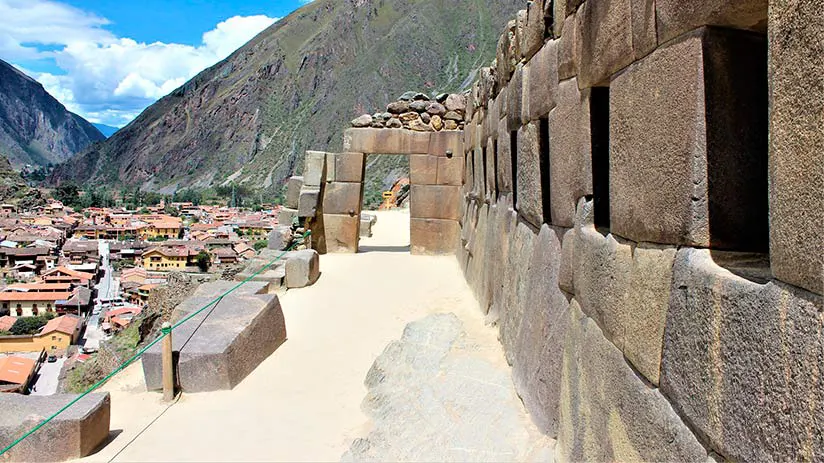
This zone appears in postcards and representative images of the archaeological site. It is at the top of the Andean terraces group. A giant stone portal that leads to a wall with 10 niches perfect and well-carved form it. During the great battle of the Incas against the Spanish, this sector suffered the greatest damage.
6. Ñusta bathtub
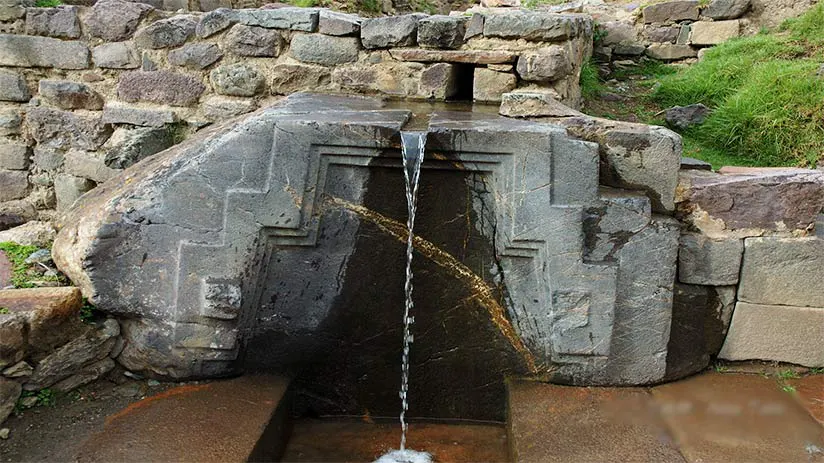
Baño de la Ñusta is a beautiful water font. Its interior was stocked with three water outlets. The Incas considered it liturgical and religious font water. And, these kinds of fonts were common in Incas buildings.
7. Cachicata Stone quarry
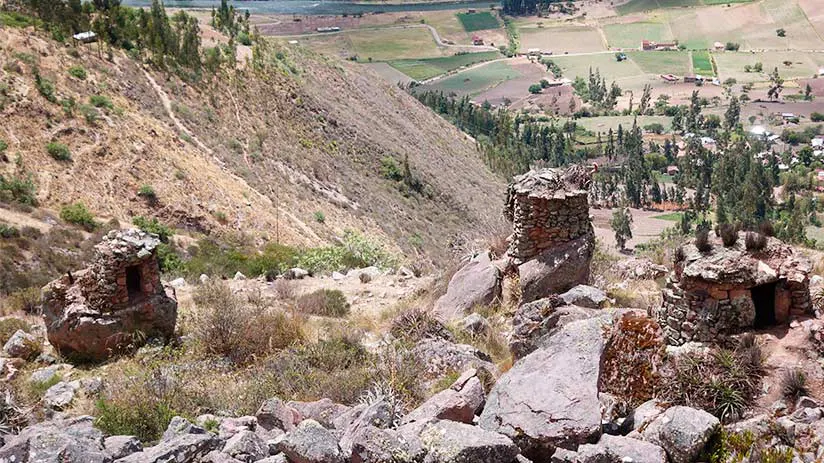
Cachicata is the name of the stone quarry that provided giant blocks to the Inca complex. According to a Sacred Valley map, the quarries are on the opposite coast of the Vilcanota River. It is just on the west side of the Inca fortress, 5 kilometers from its main square. The route passes over a slope that begins at 2750 meters above sea level until 3200 m.a.s.l.
Throughout the route, there are semi-carved stones abandoned halfway. Their sculptors abandoned these due to the attacks of the Spaniards in the area. In the same quarry, there are other giant semi-carved stones.
The Incas moved them to the fortress with ingenious movement techniques. They rolled them on reeds of logs and pushed them with thick ropes.
8. Quellorakay park
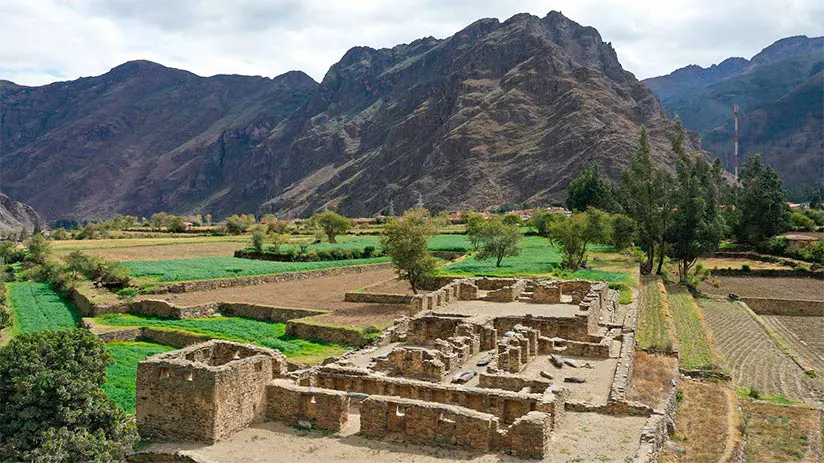
Quellorakay is a lovely archaeological site. It is next to the Urubamba River. It is also near the Inca cemetery. This area includes a series of enclosures and courts through which the visitor can walk.
In it, you can see the distribution that the Inca complexes used to have. Also, this is another of the places affected after the battle of the Incas against the Spanish in 1540.
9. Qolqas of Pinkuylluna
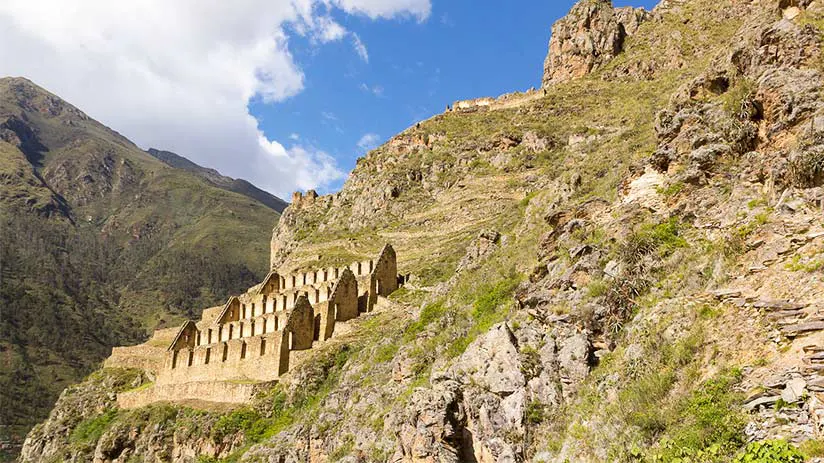
Pinkuylluna is a series of Qolcas that Incas built on top of the hill of the same name, northeast of the current town. By the way, Qolqa in the Quechua language means food and grain stores.
The Incas built Qolqas in the upper parts of the hills to take advantage of the cold and strong gusts of wind to preserve their food. These foods could be corn, wheat, and jerky, among others. The hike to this place lasts 1 hour, and the descent takes another hour. From there, you will have other views of the beautiful Inca fortress.
10. Streets and Alleys
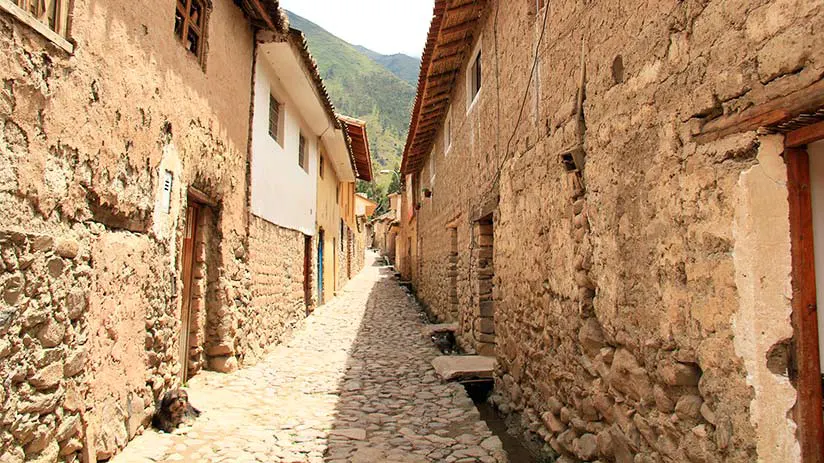
The inhabitants of the town of Ollantaytambo kept the original Inca architecture of each house. Besides the streets and their disposition. The visitor can enjoy the charming, narrow, cobbled streets with boulders, Inca walls, and a little water channel in the middle of the streets. In these channels, the water of an ancient spring runs until it reaches the Urubamba River itself.
11. Souvenir market
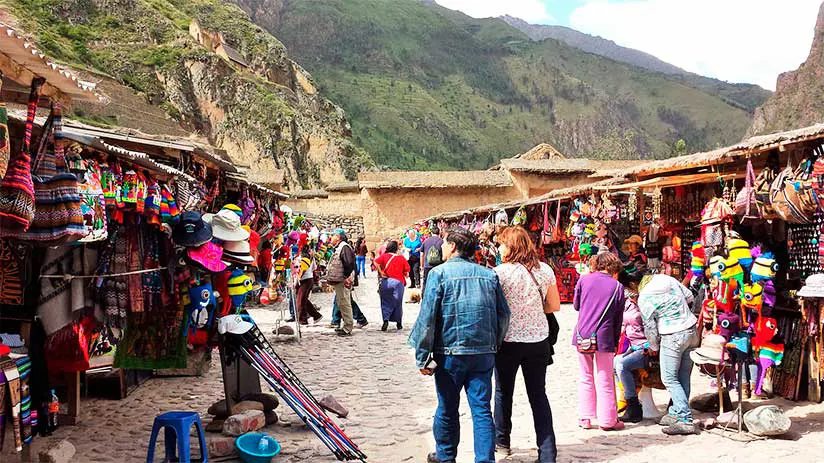
This market is very close to the archaeological park entrance, over a long esplanade. On this point, diverse handicraft stands offer charming and various Andean crafts for all tastes. From clothes with Alpaca fabrics to quartz pieces of jewelry. Also, the prices are competitive and in line with those of other artisan markets in the city of Cusco.
Best time to visit
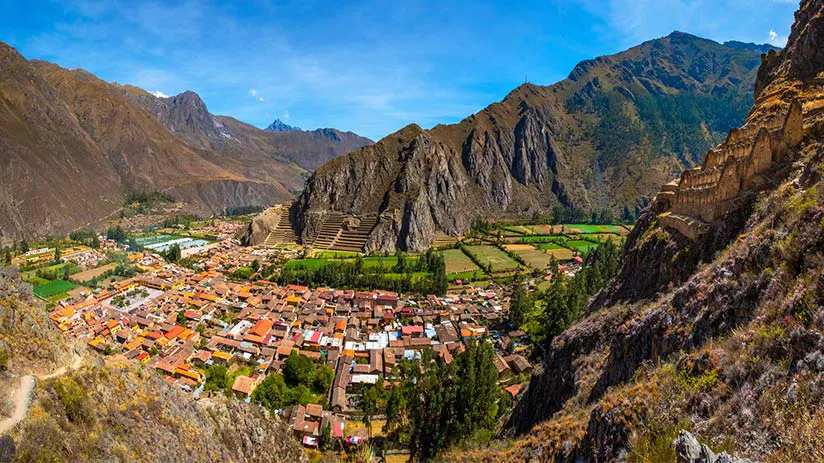
The Sacred Valley of the Incas, which hosts the Inca fortress, has a hot and dry climate. It has frequent solar presence most of the year, clear skies, and warm breezes. The Dry season is from April – November.
Otherwise, the rainy season begins in December and finishes in March. Tourism in Peru, especially during these months, means frequent rains, with cold breezes and cloudy skies. If you like to walk in the rain, this is your time.
So, If you want to enjoy things to do in Sacred Valley and Ollantaytambo, visit it during the dry season.
Getting there
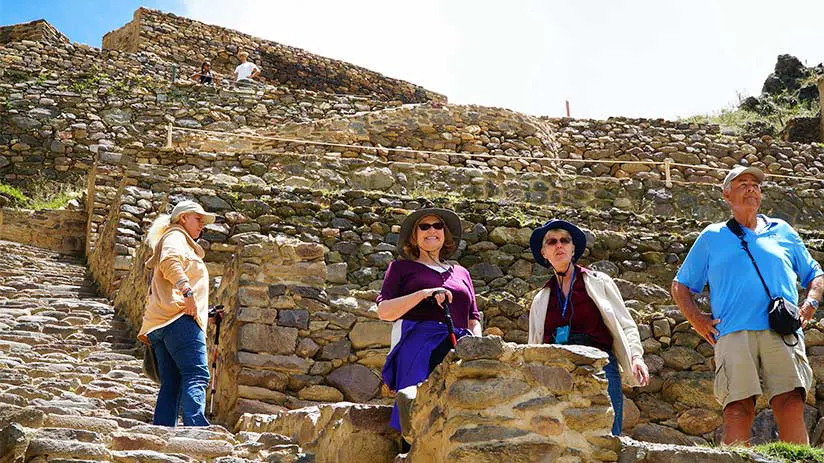
Once arrive at the Cusco, there are taxis inside the Cusco airport terminal. These work with rates over 50 soles up to 100 Soles. Taxi applications usually work with similar rates.
If you are looking for public transportation, you can take a van from Pavitos Street to Grau Avenue. These usually are modern transports, and the service has a cost of 10 soles ($3) per person. Moreover, there are shared taxis (Colectivos), and their services have a cost of 30 soles ($8) per person.
In both cases, the trip lasts approximately 02 hours. 60 km of distance from Cusco to Ollantaytambo. The transport service ends in the town’s main square (plaza de Armas). From there, you should walk a couple of short blocks to get to the ruins.
Entrance ticket
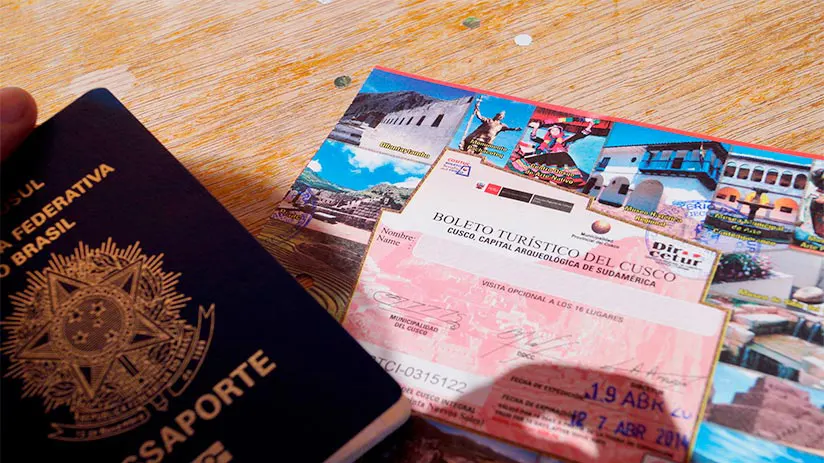
The entrance to visit these Inca ruins is not sold separately. The General Tourist Ticket (General CTT) and the Partial Tourist Ticket (Partial CTT) include it.
- General CTT. You can visit museums beside viewpoints and Incas archaeological parks in Cusco, the South Valley, and the Sacred Valley. When we talk about Sacred Valley, we include Ollantaytambo ruins. It has a cost of 130 Soles ($35) per person.
- Sacred Valley Partial CTT. It is helpful to visit the Sacred Valley and its archaeological parks. This includes Pisac, Moray, Chinchero, and Ollantaytambo. It has a cost of 70 soles ($19)
Both tickets can be purchased at the municipality’s central office, Av. El Sol 103, in the historic center of Cusco, or at the Checkpoint of every Archaeological site. The counter only accepts cash, not credit or debit cards; consider it.
“IF YOU ARE DELIGHTED TO BE IN ANCIENT RUINS, YOU ARE EITHER A CURIOUS HISTORIAN OR A ROMANTIC PERSON!”
Ollantaytambo will be one of those destinations that will live forever in your memory. We hope, together with the Machu Travel Peru team, to have been helpful. We seek to tell you the main aspects of this incredible historical destination.
If you want a recommendation during your Machu Picchu tour, we advise you to spend at least one night there. Its historical and cultural offer and its people are more attractive than staying in Aguas Calientes. Visit the fortress, enjoy a night there and the next day take your train to Machu Picchu, you will thank us for it!
